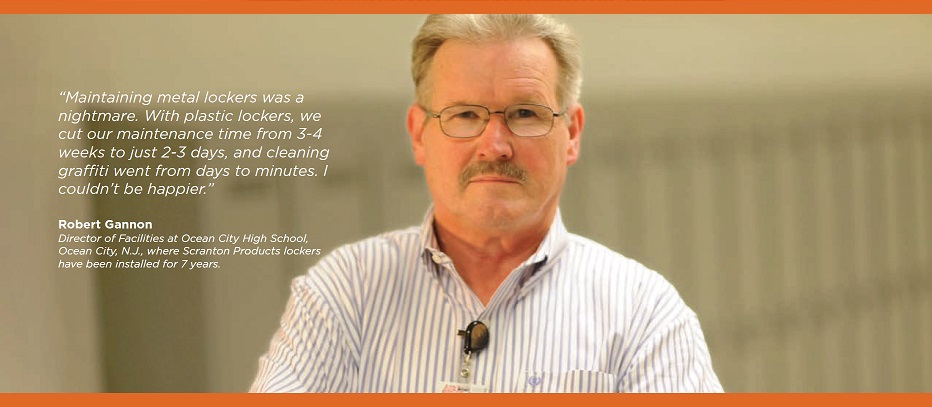HDPE (high-density polyethylene) is a durable solid plastic that has a variety of applications. Most notably, HDPE is used for bathroom partitions and stalls, commercial lockers and student lockers within educational facilities. Many businesses and schools have implemented HDPE materials with amazing results. So, why is HDPE being considered a super material for facilities?
Durability
As a facility manager, when it comes time for remodeling and renovations, you need to think ahead. Choosing a highly durable material has its advantages because you want the material lasting throughout the years without having to pay a fortune for replacements. HDPE has proven to be a stronger, more stable material than most plastics, wood, and even metal. It’s impact-resistant, so it can stand up to the pressures and elements of your facility.
When you choose HDPE, you no longer have to worry about any exterior damages. HDPE won’t scratch or dent, so you don’t have to have replacements on-hand. You don’t even have to worry about graffiti, because with HDPE, it can be easily wiped away.
Improving Air Quality
One of the main reasons why HDPE materials are utilized as restroom stalls is because it not only provides security and privacy, but it can also help keep the air quality high. Restrooms are a hotbed of moisture and humidity. Most plastic partitions have a kraft paper or cardboard core that can become moist, and eventually will sprout mold. Mold will not only lower the air quality, but it’ll result in a pungent odor that won’t be corrected with air fresheners.
When standard plastic partitions have mold sprouting inside of them, it’s too late, and they’ll have to be replaced in order to get rid of the mold. HDPE, on the other hand, resists mold growth because of its solid plastic construction. Because mold can’t grow in HDPE partitions, your air quality won’t drop, and you won’t have to replace your partitions anytime soon.
Low Maintenance
One phrase that facility managers love to hear is “low maintenance.” HDPE plastic doesn’t require a lot of upkeep. Because it’s a highly durable material, it doesn’t get the normal wear and tear that most materials get. In fact, it can outlast most plastics and won’t rust like metal. It doesn’t even require any fresh coats of paint because of its homogenous coloring. All that HDPE requires is a light cleaning every now and again.
Sustainability
Another major benefit to HDPE is that it’s made from 100% post-consumer recycled material. They’re even recyclable themselves. You can effectively take your facility in a greener, more eco-friendly direction by installing HDPE lockers and partitions. Because it doesn’t require new coats of paint, you greatly reduce the risk of VOC (volatile organic compound) emissions in the air, which can reduce the quality and have a negative effect on occupant health.
To learn more about why HDPE is a superior material, download our FREE eBook, The Ultimate Guide to HDPE Plastic Lockers, or contact us at Scranton Products.

